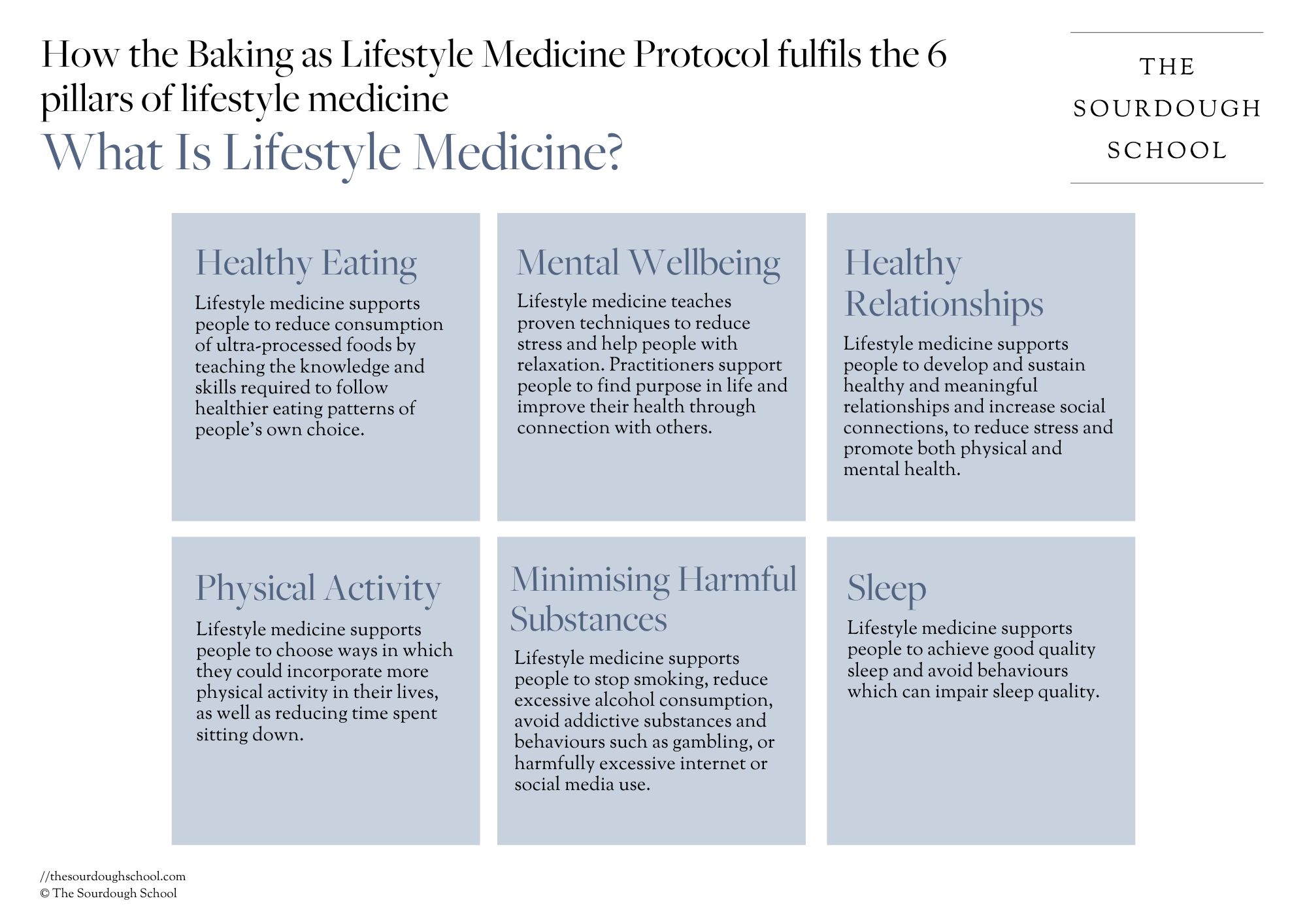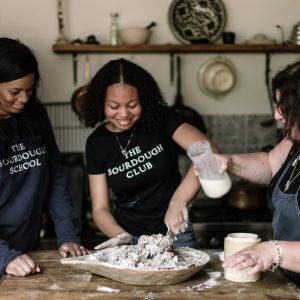Learning Objective
In this feature we explore what Lifestyle Medicine is, why it is needed, and how it is structured.

In an ideal world I would be able to spend time with my patients teaching, supporting and inspiring lifestyle changes as preventative healthcare. The reality is I get a short consultation and rarely the time to follow up. So knowing exactly how the BALM works means I can prescribe my patients BALM and the team at The Sourdough School and Club will support my patients to make those changes through baking.
Lifestyle diseases: a growing threat
BALM Protocol is the framework we use to teach here at The Sourdough School.
Noncommunicable or ‘lifestyle” diseases (NCDs) are the leading cause of death worldwide, accounting for 71% of annual mortality rates. The most common NCDs include heart disease, obesity, cancer and type-2 diabetes. Besides causing innumerable premature deaths, lifestyle diseases place a huge burden on healthcare systems around the globe. Research shows that lifestyle factors such as tobacco use, lack of physical activity, poor diet (particularly one high in ultra-processed foods) and stress all increase a person’s risk of developing these conditions.
The Baking As Lifestyle Medicine (BALM) Protocol
The current food system is broken at multiple levels, from the pesticides used in our soils to the emulsifiers and additives adulterating industrially-processed foods. Nowhere is this more apparent than in the bread we eat. The figures reported by the UK Flour Millers say that bread is bought by a staggering “99.8% of British households” and that “the equivalent of nearly 11 million loaves are sold each day. Approximately 60-70% of the bread we eat is white and sandwiches are thought to account for 50% of overall bread consumption. Average bread purchases are the equivalent of 60.3 loaves per person per year.”
Most bread sold is made by modern processing methods that strip heart-healthy whole grains of their nutrient contents, resulting in low-fibre bread with a high glycemic index. Over time, white processed bread can increase a person’s risk of insulin resistance alongside other lifestyle diseases.
We’re on a mission to revolutionise the bread making process at every level – from soil to slice. The rules governing this are laid out in our Baking As Lifestyle Medicine protocol.
Comprising seven principles and reflecting over 20 years of research, our BALM protocol is built upon the six pillars of lifestyle medicine and guides everything we do here at the School.

Lifestyle medicine: a new breed of healthcare
The Six Pillars Of Lifestyle Medicine
In response to this growing health threat, many health professionals are heralding the arrival of a new care model known as lifestyle medicine. Which begs the question, what does it mean?
Lifestyle medicine is a holistic, person-centred branch of medicine that seeks to prevent, manage and reverse lifestyle diseases by tackling the root lifestyle choices behind their development. In particular, lifestyle medicine aims to:
- encourage healthy eating (particularly the adoption of a whole food, plant-based diet)
- improve sleep quality
- nurture mental wellbeing
- increase activity levels
- foster healthy social connections
- support people to avoid harmful substances like alcohol or tobacco
Collectively, these are known as the six pillars of lifestyle medicine, a key part of the “Lifestyle Medicine Principles” as laid out by the British Society Of Lifestyle Medicine:






